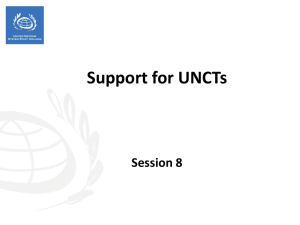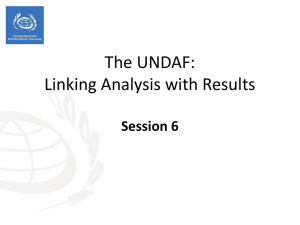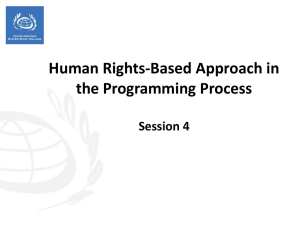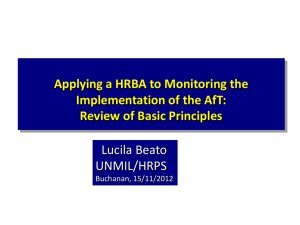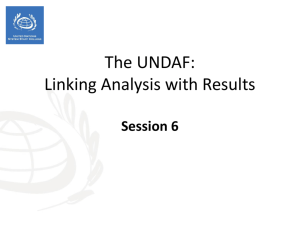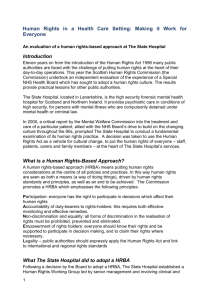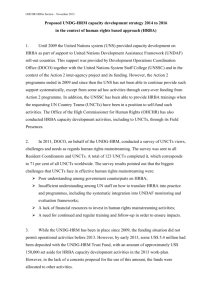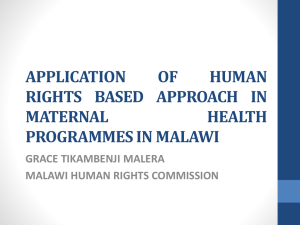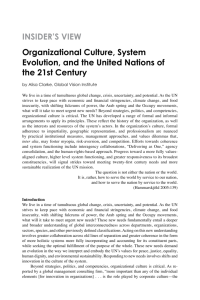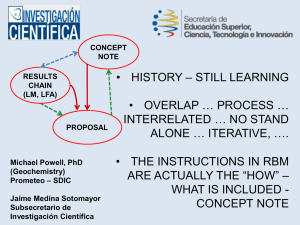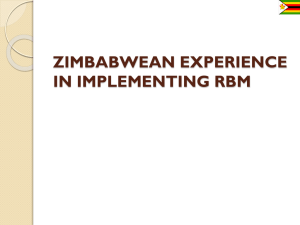Session 0 - Welcome and Introductions 15-3-2011
advertisement
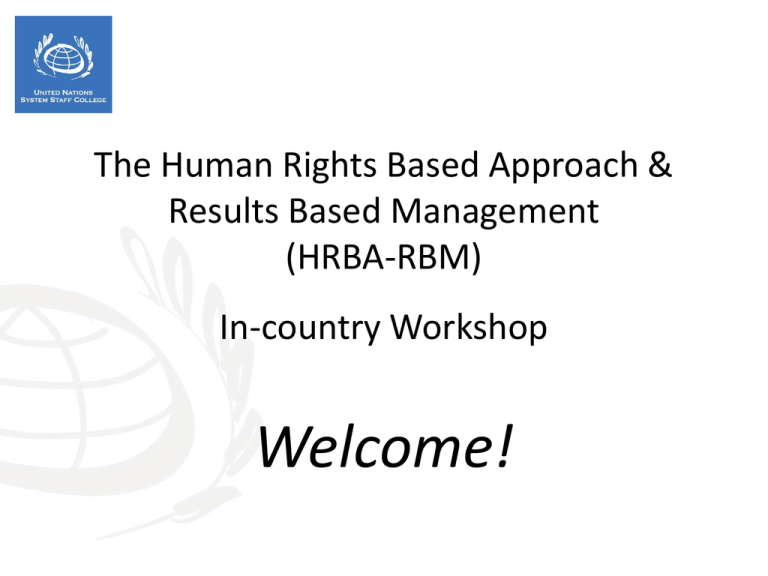
The Human Rights Based Approach & Results Based Management (HRBA-RBM) In-country Workshop Welcome! Introductions • Your name • Your agency and position • 1 thing you most want from this workshop Learning Needs Assessment Self-assessed level of knowledge on scale of 1 (low) to 5 (high) Example only - Copy and paste from LNA results Objectives Participants will be able to: 1. Understand the value of human rights in development 2. Explain the contributions of a HRBA and RBM to UN and national programming processes 3. Apply the key elements of HRBA and RBM to strengthen country analytic work and the UNDAF Our schedule Our Roles: Resource Persons & Facilitators What we do The Resource Person: • Does pre-workshop analysis • Provides a general knowledge of UN Reform, Millennium Declaration, MDGs, Country Analysis and UNDAF • Helps you find information • Provides examples, lessons, and good practices • Stimulates creativity – forward vision • Wears a UN hat What we do The Facilitator • • • • • Helps with pre-workshop arrangements Facilitates sessions Ensures interactive, participatory retreat Manages time Wears a UN hat Ground Rules • What are some ground rules to guide our work together during this workshop? During the workshop… • • • • • What are Human Rights? What is HRBA? What is RBM? Why are we doing a HRBA? How do we apply HRBA to programming? What is the value added of applying HRBA to programming? • …? Who works on human rights? What are HRBA & RBM? What is a HRBA? Rhetorical repackaging? Human rights activities? Political conditionality? What are human rights? • Universal legal guarantees • Civil, political, economic, social and cultural • Protect human values – freedom, equality, dignity • Inherent to individuals and, to some extent, groups • Reflected in international norms and standards; • Legally binding on States HRBA and Problem Assessment & Analysis A HRBA helps the UN and partners to answer 4 critical questions: Who has been left behind Why? Which rights are at stake? Who has to do something about it? What do they need, to take action? Process and outcome are equally important What is RBM? • Helps us to connect what we do to what we want to achieve And… • RBM tells us how we’ll know if we’ve achieved it HRBARBM A HRBA brings depth and legitimacy to our practice of RBM by telling us… •the right questions to ask •the kinds of changes we should be aiming for •how to measure, monitor, and report on change with stakeholders. HRBA-RBM and the UNDAF Q. What’s needed for action? A. Critical changes in performance and capacity UNDAF results support these changes
